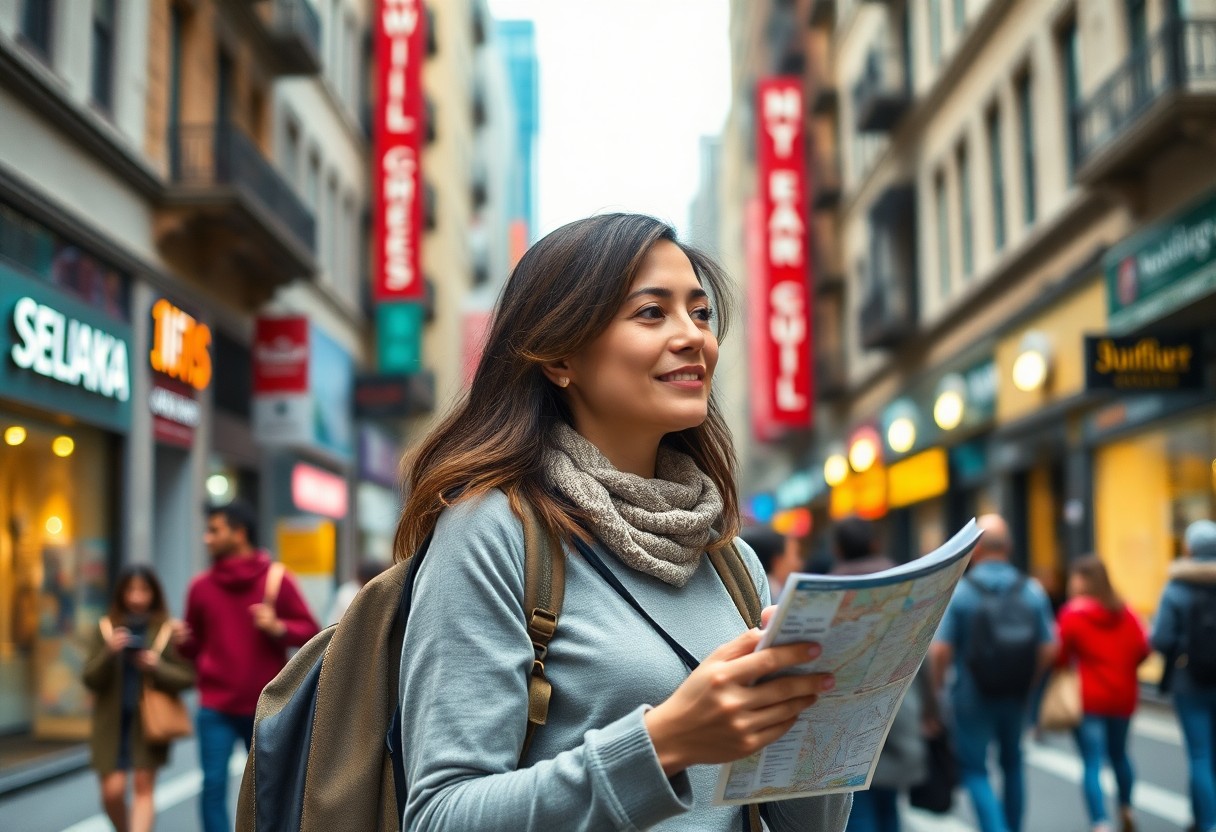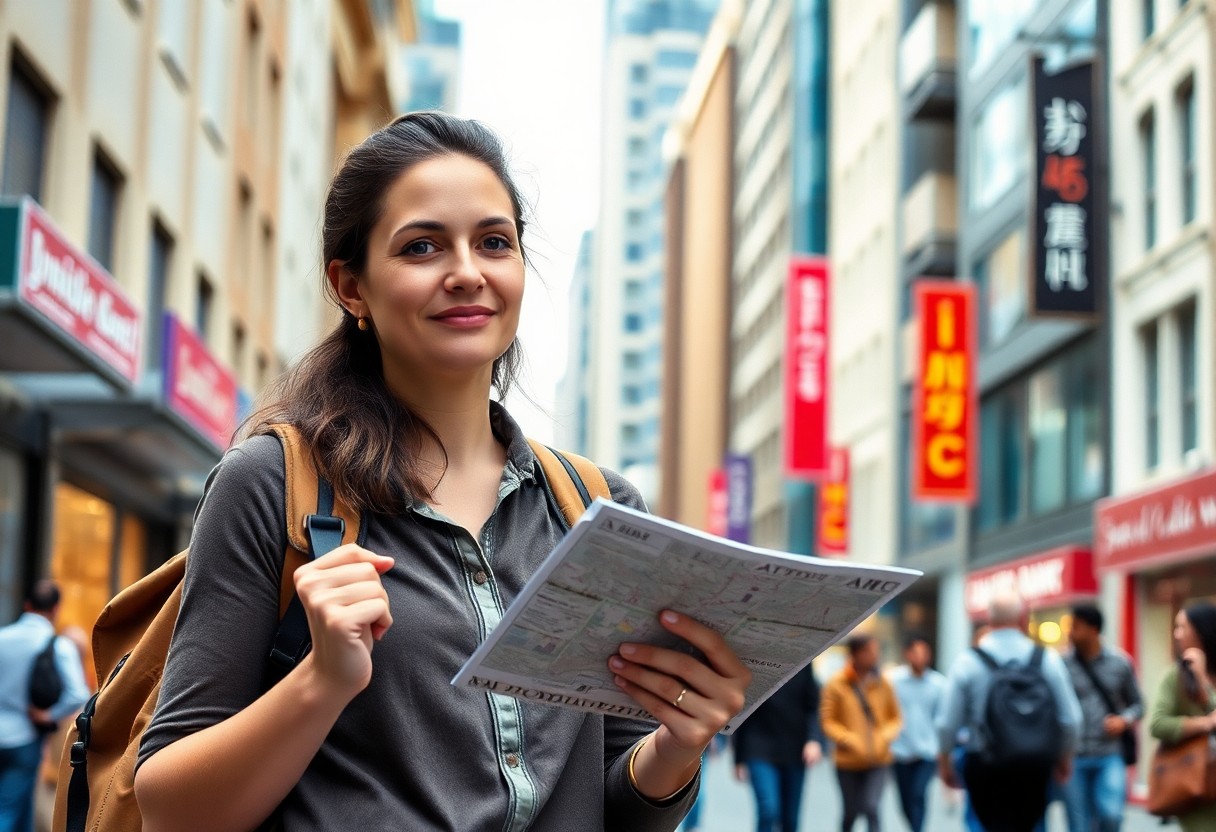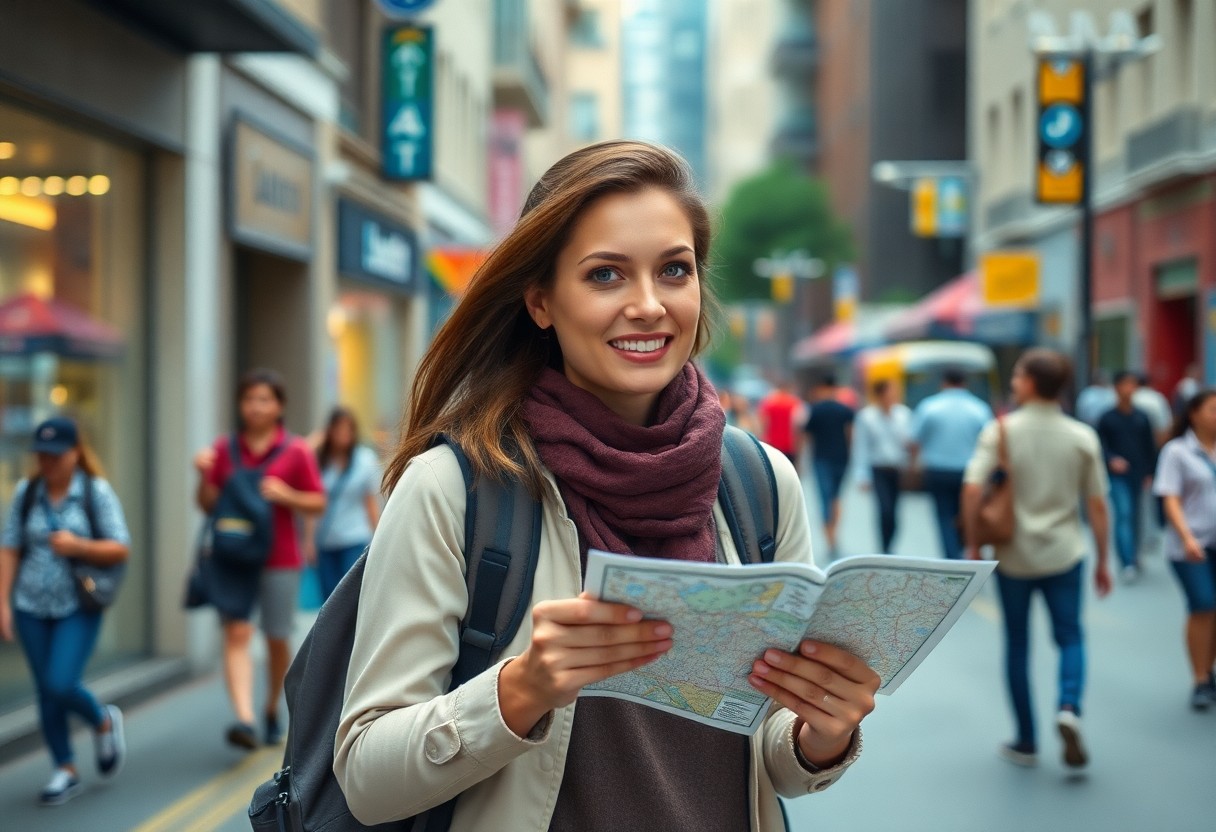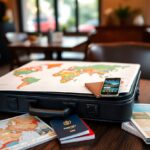
Key Takeaways:
- Research your destination thoroughly to understand local customs, transportation options, and safe neighborhoods.
- Keep your valuables secure and carry only necessary items when exploring new areas.
- Stay connected by sharing your itinerary with trusted friends or family and regularly checking in.
- Trust your instincts and avoid situations or places that feel unsafe or uncomfortable.
- Learn basic self-defense techniques and keep emergency contacts accessible during your trip.
Understanding the Risks of Solo Travel
A solo travel experience offers freedom and self-discovery, but it also involves certain risks you need to be aware of. By understanding potential dangers, you can take proactive steps to protect yourself and enjoy your journey with greater confidence and peace of mind.
Common Threats to Solo Travelers
Below are some common threats you might face as a solo traveler: petty theft, scams targeting tourists, and unsafe accommodations. You could also encounter harassment or become vulnerable in unfamiliar environments, making awareness and preparation vital.
Personal Safety Statistics
On average, solo travelers face a higher risk of encountering theft or personal safety incidents compared to those traveling in groups. Data shows that attentiveness to your surroundings and taking preventive actions significantly reduces these risks.
For instance, studies indicate that solo female travelers are often more targeted for harassment, which underscores the importance of staying in well-reviewed locations and maintaining communication with trusted contacts during your trip.
Psychological Effects of Traveling Alone
Threats to your mental well-being can arise when traveling solo, including feelings of loneliness, anxiety, or heightened stress from managing all aspects of your journey alone. Recognizing these effects helps you develop strategies to maintain emotional balance.
Solo travel can be both empowering and challenging; while you gain independence, you might also experience moments of isolation. Engaging with local communities, maintaining regular contact with loved ones, and planning rest days can help sustain your mental health along the way.
Research Before You Go
Assuming you want to have a safe and enjoyable solo adventure, thorough research before your trip lays the foundation. Understanding your destination allows you to anticipate challenges and navigate unfamiliar environments with confidence. By gathering information on safety, culture, and local guidelines, you equip yourself to make informed decisions and minimize risks during your journey.
Investigating Your Destination’s Safety Record
Record the recent safety statistics and any travel-related incidents in your chosen destination. Reviewing crime rates, common scams, and emergency services availability helps you identify potential hazards. This awareness enables you to plan your days with caution, avoid risky areas, and prepare contingency measures for a smooth trip.
Cultural Norms and Local Laws
About understanding cultural expectations, knowing local customs and laws ensures you respect the community and avoid misunderstandings. Awareness of dress codes, social etiquette, and behavioral norms creates positive interactions and prevents conflicts that could jeopardize your safety.
Considering cultural norms and local laws extends beyond polite behavior; it includes legal restrictions that may differ significantly from your home country. Familiarizing yourself with rules on photography, alcohol consumption, and public conduct protects you from unintended offenses and legal trouble during your travels.
Utilizing Travel Advisories and Solo Traveler Forums
Local government travel advisories and solo traveler forums provide up-to-date information and personal experiences that enhance your preparation. Engaging with these resources helps you gauge current conditions and practical tips, allowing you to adjust plans and approach your adventure more securely.
Safety information from official advisories combined with insights from solo traveler communities gives you a balanced perspective on what to expect. These tools empower you to make real-time decisions and connect with others who can offer support and advice throughout your journey.
Share Your Itinerary
Now that you’re launching on your solo adventure, sharing your itinerary ensures someone you trust is aware of your plans. This simple step helps enhance your safety by keeping others informed about where you’ll be and when. It creates a support network that can assist if situations arise, allowing you to travel with greater confidence and peace of mind.
Informing Friends and Family
One of the most reliable ways to stay safe during solo travel is to keep your friends and family updated. Share details of your destinations, accommodations, and travel dates. By doing so, those who care about you can check in periodically and notice if anything seems off, increasing the chances of prompt assistance if needed.
Using Location-Sharing Apps
By utilizing location-sharing apps, you can offer real-time updates to your trusted contacts. These apps allow your loved ones to see your whereabouts, helping them feel more connected and making it easier to alert authorities if you’re ever in an emergency.
Further, many location-sharing apps come with built-in safety features like emergency alerts and SOS signals. Using these tools ensures that help can be summoned quickly, and your progress can be monitored discreetly throughout your journey for added security.
Creating Emergency Plans
Family or close contacts should be informed about your emergency protocols in advance. Establish clear steps for what they should do if they lose contact or if you signal for help. Having this plan laid out enables rapid and organized responses to unforeseen situations.
Itinerary security isn’t just about sharing your schedule. It also involves setting up predefined communication intervals and designated emergency contacts. This structure empowers both you and your support system to act swiftly and effectively should an unexpected event occur.
Stay Connected
Once again, maintaining communication during your solo travels is crucial for your safety and peace of mind. Staying connected allows you to check in with loved ones, access important information, and reach out for help if necessary. You should plan ahead to ensure your devices are set up for reliable connectivity wherever you go, so you can enjoy your adventure with confidence and security.
Choosing the Right Mobile Plan
One important step is selecting a mobile plan that fits your travel needs. Look for plans offering extensive coverage, international roaming options, or affordable local SIM cards. This way, you avoid unexpected charges and ensure you stay reachable without interruptions, no matter where your journey takes you.
Importance of Emergency Contacts
Plan to have a list of emergency contacts accessible at all times during your trip. This includes local emergency numbers, contacts back home, and any important medical or travel assistance services. Having these numbers handy will help you respond quickly and calmly in unforeseen situations.
Understanding the significance of emergency contacts means you should store them in multiple places, such as your phone, a written note, and your travel documents. Share them with trusted friends or family so someone is always informed about whom to contact if you need assistance, adding an extra layer of security to your travels.
Utilizing Offline Communication Methods
At times, you might find yourself without reliable internet or phone service, so having offline communication strategies is equally important. Consider pre-downloading maps, translation apps, or emergency phrasebooks to use without connectivity. This ensures you can navigate and communicate effectively no matter the circumstances.
Consequently, equipping yourself with offline tools prepares you for unexpected communication gaps. You can stay organized and informed by carrying physical copies of crucial documents, emergency contacts, and travel info. This approach minimizes dependency on digital devices and helps you maintain safety and confidence throughout your solo adventure.
Blend In, Don’t Stand Out
Your safety during solo travel improves significantly when you blend in with the locals instead of drawing unwanted attention. By observing and adapting to your surroundings, you reduce the risk of becoming a target for opportunistic crime. Dressing modestly, minimizing flashy items, and respecting cultural norms help you navigate unfamiliar places with confidence and ease.
Dressing Appropriately for the Location
The way you dress sends a message to those around you. Selecting attire that matches the local climate, culture, and customs helps you avoid standing out as a tourist. Researching and choosing clothing that is modest and practical not only shows respect but also makes it easier for you to move comfortably and interact with locals.
Minimizing Visible Wealth
One effective strategy to stay safe is to keep valuables out of sight. Avoid wearing expensive jewelry, flashy watches, or carrying designer bags that can attract thieves. Keeping your money and important documents securely hidden helps you navigate your surroundings without inviting unnecessary attention.
With careful planning, you can carry only what you need and use discreet accessories like money belts or hidden pockets. Limiting your exposure of technology such as smartphones or cameras further reduces the risk of being targeted. Staying low-key ensures your focus can remain on enjoying your adventure safely and confidently.
Adapting to Local Customs and Behavior
For effective blending in, you should observe and mimic the mannerisms and social etiquette of the place you are visiting. Understanding local greetings, gestures, and appropriate topics of conversation helps you build rapport and avoid misunderstandings.
Behavior that aligns with local customs signals respect and awareness, which often leads to better treatment and enhances your personal security. Taking the time to learn about social norms allows you to interact more naturally and prevents you from inadvertently offending anyone or drawing unwanted attention.
Trust Your Instincts
Once again, trusting your instincts is one of the most powerful tools you have when traveling solo. Your intuition can quickly alert you to potential dangers or unsafe situations even before your logical mind processes the details. By tuning into these subtle signals, you empower yourself to make timely decisions that prioritize your safety and well-being throughout your journey.
Recognizing Uncomfortable Situations
Recognizing uncomfortable situations starts with paying attention to how you feel in various environments. If something feels off, whether it’s unfamiliar behavior from others or an unsettling atmosphere, allow yourself to acknowledge those feelings. Your discomfort is a valid indicator that the situation may warrant caution or action to protect yourself.
Analyzing People and Environments
Your ability to analyze people and environments objectively helps you assess risk more effectively. Observe behavior, body language, and surroundings carefully to determine if something seems unusual or threatening. This awareness lets you navigate social settings with more confidence and avoid potentially unsafe interactions.
The skill of reading people and places improves with practice and attentiveness. By watching social cues and environmental details, you can detect when someone’s intentions might not align with your safety. This ongoing analysis complements your instincts and equips you to adjust your plans proactively.
Having the Confidence to Depart
Your confidence to leave a situation that feels wrong is key to maintaining your safety. Trust that walking away, even if it feels awkward, is a strong and necessary choice. Empower yourself to exit quickly without hesitation when your instincts signal danger.
Considering the unpredictability of solo travel, the ability to confidently depart from risky environments protects you from escalating threats. Cultivating this mindset ensures you take control, prioritize your security, and maintain peace of mind throughout your adventure.
Secure Your Belongings
After planning your solo trip, securing your belongings becomes a vital step to ensure your adventure remains stress-free. Protect your valuables by staying vigilant about where you store them, using travel accessories designed for safety, and keeping an inventory of your important items. Being proactive with your possessions helps prevent theft and loss, allowing you to focus on enjoying your journey with confidence.
Using Anti-Theft Gear
Against potential pickpockets and opportunistic theft, equip yourself with anti-theft gear like lockable backpacks, slash-proof straps, and RFID-blocking wallets. These items create extra barriers that deter thieves and protect your personal information. Carrying specialized gear sends a message that you are prepared and less vulnerable, greatly reducing the chances of losing your belongings while on the move.
Document and Cash Safety
After packing your importants, organize your documents and cash for easy access and security. Use a money belt or hidden pouch to keep your passport, IDs, and emergency cash safe and out of sight. Distribute cash across different pockets rather than keeping it all in one place. This method guards against total loss if pickpocketing occurs.
Even when you trust the accommodations and locals, carrying all your money and documents in a single spot increases risk. By spreading out your resources, you ensure that losing one stash doesn’t mean complete loss. Additionally, avoid flashing large amounts of cash publicly to minimize attracting unwanted attention during your travels.
Creating Digital Backups of Important Documents
At the start of your trip, scan or photograph important documents such as your passport, visa, ID cards, travel insurance, and emergency contacts. Store these digital copies securely on cloud services or encrypted storage apps accessible from any device. This preparation can be a lifesaver if you lose physical documents or need to verify your identity quickly.
AntiTheft measures extend beyond physical protection and include digital preparedness. Having backups of important documents reduces panic and speeds up the process of getting replacements. Ensure you use strong passwords and two-factor authentication for your cloud accounts to keep your data safe while traveling.
Choose Accommodations Wisely
Keep your safety a top priority by selecting accommodations that fit your needs and comfort level. The right place to stay can greatly enhance your solo travel experience, providing you with peace of mind and a secure base from which to explore. Consider the location, accessibility, and amenities offered, verifying that they align with your expectations and safety requirements.
Booking Options with Strong Reviews
Before finalizing your stay, explore booking options that feature strong, reliable reviews from fellow travelers. These firsthand accounts can give you valuable insights into the quality and safety of the accommodation. Opt for platforms known for vetting properties and encouraging honest feedback, ensuring you make an informed decision that supports your safety and comfort.
Evaluating Safety Features
Safety assessments should include looking at features like secure locks, well-lit entryways, and 24-hour reception or security personnel. You want accommodations that offer a sense of security so you can relax and enjoy your travels without worry.
And beyond the basics, consider if there are emergency exits, security cameras, and if the property has protocols for guest safety. These additional elements can provide extra layers of protection, making your stay safer and less stressful.
Understanding the Surrounding Area
Booking a place in a safe, accessible neighborhood helps ensure you can move around confidently, day or night. Research local amenities, public transit options, and the general atmosphere of the area to match your comfort level.
The more you familiarize yourself with the surroundings—such as nearby grocery stores, restaurants, and emergency services—the better prepared you’ll be to navigate the area confidently and avoid unexpected challenges during your solo adventure.
Navigating Public Transportation
Not all public transportation systems are created equal, especially when you travel solo. You need to stay alert and be aware of your surroundings at all times. Pay attention to your belongings, avoid empty or poorly lit stops, and always plan your route ahead to minimize stress and confusion. By familiarizing yourself with the transit environment, you build confidence and reduce vulnerability, making your journey both safer and more enjoyable.
Researching Local Transit Options
For a smoother experience, gather information about the types of public transportation available in your destination. Look for reliable sources that outline schedules, routes, fares, and peak travel times. Planning your trips around well-established transit lines or services with good reputations can help you avoid unexpected delays or unsafe situations. This preparation allows you to travel smarter and with greater assurance.
Evaluating Safety and Security Measures
Navigating public transportation safely means assessing how secure each mode is before you travel. Check if the vehicles have surveillance cameras, if the stations are staffed, and how well-lit they are, especially at night. Knowing these details ensures you choose the safest options and know what to expect during your journey, helping you stay in control.
For instance, many transit systems now offer real-time tracking apps, emergency call buttons, and clear signage to enhance passenger safety. Evaluating how accessible these features are during your trips can make a significant difference in your overall security, giving you peace of mind and immediate assistance if needed.
Learning Key Phrases for Assistance
Security often depends on your ability to communicate effectively in a foreign place. Learning basic phrases to ask for help, directions, or emergency assistance empowers you to handle unexpected situations with greater ease. This linguistic preparedness can bridge gaps that otherwise might leave you vulnerable or confused.
Consequently, mastering a few imperative phrases like “Where is the nearest station?”, “I need help,” or “Is this safe?” can facilitate quicker responses from locals or transit staff. It also demonstrates your willingness to engage respectfully with the community, which can encourage others to offer assistance when necessary.
Connecting with Other Travelers
Despite the independence of solo travel, connecting with other travelers can greatly enhance your experience and boost your safety. Building rapport with fellow adventurers allows you to share valuable insights, exchange tips, and create a support network while exploring new places. Engaging with others also helps you stay more alert and informed about your surroundings, making your trip both enjoyable and secure.
Benefits of Meeting Fellow Adventurers
Fellow travelers offer a unique perspective and companionship that can enrich your journey. They can provide guidance on hidden gems, share travel experiences, and offer peace of mind when navigating unfamiliar environments. Connecting with others often leads to lasting friendships and opens doors to new cultural exchanges, adding depth and confidence to your solo adventures.
Joining Travel Groups or Forums
Other travelers like you often join online travel groups or forums to exchange advice and plan meetups. These communities create opportunities to find travel partners, discover local recommendations, and access firsthand safety tips. By becoming part of such groups, you can build connections before you even arrive at your destination, enhancing your overall travel confidence.
Plus, active participation in travel forums allows you to ask specific questions tailored to your itinerary and receive real-time feedback from experienced travelers. These platforms frequently share updates on travel alerts and cultural etiquette, helping you navigate your journey more smoothly and securely.
Attending Local Tours and Events
Fellow solo travelers often benefit from joining local tours and events, which provide a welcoming environment to meet others while exploring safely. These activities offer structured experiences where you can engage with both locals and travelers, creating a sense of community and reducing the risks associated with going it alone.
Travelers who participate in organized tours or attend local events also gain insider access to cultural insights and hidden locations, making your adventure richer. These settings facilitate natural social interactions, allowing you to form meaningful connections that enhance both your safety and enjoyment during your travels.
Be Aware of Your Surroundings
To stay safe while traveling solo, pay close attention to your environment at all times. Observing the details around you helps you spot potential risks early, avoid danger, and make informed decisions. Your awareness can increase your confidence and allow you to navigate unfamiliar places more comfortably, ensuring a smoother and safer adventure.
Developing Situational Awareness
Developing situational awareness involves being mindful of people, places, and activities nearby. Notice who is around you, changes in behavior, and any unusual occurrences. This awareness helps you anticipate and respond to possible threats before they escalate, allowing you to maintain control of your safety during your travels.
Avoiding Distracted Behavior
Your focus should remain on your surroundings rather than on your phone or other distractions. Multitasking while walking or navigating can reduce your ability to detect potential dangers, making you vulnerable. Stay present and engaged to better assess any risks and keep yourself protected during your journey.
For instance, using headphones or texting while moving through busy or unfamiliar areas can prevent you from hearing warnings or noticing suspicious activity. By limiting distractions, you increase your chances of reacting swiftly if a situation demands your attention.
Staying Alert in Crowded Places
Staying alert in crowded places is vital, as busy environments can mask theft or other threats. Observe exits, keep your belongings secure, and avoid getting too engrossed in your surroundings. A heightened awareness in crowds will help you spot potential issues and maintain your personal safety effectively.
But crowded areas often bring a mix of people and distractions that make it easier for pickpockets or scammers to operate. Keeping your focus and scanning for suspicious behavior can prevent unpleasant encounters and help you enjoy the experience without unnecessary risk.
Emergency Preparedness
Many solo travelers underestimate the importance of preparing for emergencies before and during their trips. Staying informed and equipped can make all the difference when unexpected situations arise. By planning ahead, you gain confidence and ensure a safer adventure by knowing what to do if something goes wrong.
Knowing Local Emergency Numbers
Above all, make sure you have quick access to local emergency contact numbers for police, fire, and medical services. These numbers vary widely across countries and regions, so storing them on your phone and having a written copy can save valuable time in a crisis.
Identifying Nearest Medical Facilities
Across the area you’re visiting, locate the closest hospitals, clinics, or urgent care centers before you set out each day. This knowledge helps you act swiftly should you face any health issues or injuries during your travels.
Local healthcare quality and accessibility can differ greatly depending on where you are. Research the reputation and services of nearby medical facilities, and consider whether you need travel insurance to cover potential medical expenses. Being informed gives you peace of mind and ensures you’re prepared for any health concerns.
Preparing for Natural Disasters
Among the many emergencies you might encounter, natural disasters such as earthquakes, floods, or hurricanes require specific preparation. Awareness of the risks in your destination and having a clear plan can enhance your safety significantly.
Preparedness starts with understanding local disaster protocols, evacuation routes, and safe zones. Pack necessary items like water, a flashlight, and a portable phone charger. Stay updated on weather alerts and follow guidance from authorities to navigate any natural hazard with greater confidence and security.
Handling Unforeseen Challenges
Unlike planned aspects of your trip, unforeseen challenges can test your adaptability and resourcefulness. When you encounter unexpected situations, staying calm and assessing your options helps you make informed decisions. Preparing mentally for surprises and having backup plans ensures you can navigate difficulties without compromising your safety or enjoyment.
Dealing with Theft or Loss
At the moment you realize something is stolen or lost, notify local authorities and your accommodation staff to report the incident. Carry copies of important documents separately and have emergency contact numbers saved on your phone so you can act swiftly. Staying vigilant and avoiding panic helps you manage the situation effectively.
Communication Barriers and Solutions
Solutions like translation apps, basic language phrases, and non-verbal cues can bridge communication gaps when language differences arise. Using these tools encourages clearer interaction and reduces misunderstandings while engaging with locals or authorities.
This approach not only eases daily interactions but also enhances your confidence while navigating unfamiliar environments. Downloading reliable offline translation apps prior to your trip and learning imperative phrases in the local language empowers you to handle emergencies, ask for directions, and access services with greater ease.
Managing Health Issues While Traveling
While minor health problems are common during travel, having a well-stocked first aid kit and access to local medical facilities helps you address issues promptly. Maintaining hygiene, staying hydrated, and getting adequate rest are imperative steps for your well-being on the road.
In addition to preventive care, researching nearby medical centers and travel insurance coverage before you depart provides peace of mind. Being informed about your health needs and potential risks enables you to seek professional assistance quickly and continue your adventure safely.
Conclusion
Now that you have a set of practical solo travel safety tips, you can launch on your adventure with confidence and awareness. By staying alert, planning ahead, and trusting your instincts, you ensure your experience is both enjoyable and secure. Taking these proactive steps allows you to fully immerse yourself in new cultures and environments while prioritizing your well-being throughout your journey.
FAQ
Q: What are some vital safety precautions to take before starting a solo trip?
A: Before initiateing on a solo adventure, it’s important to research your destination thoroughly, including local customs, areas to avoid, and emergency contacts. Inform a trusted friend or family member about your itinerary and check in with them regularly. Secure important documents and copies, and ensure your accommodation has good reviews regarding safety.
Q: How can I stay safe when meeting new people while traveling alone?
A: When meeting new people, always trust your instincts and meet in public places where there are plenty of other people around. Avoid sharing too much personal information upfront and refrain from accepting drinks or rides from strangers. It is also helpful to stay sober and keep your belongings close to you.
Q: What are some practical ways to protect my belongings during solo travels?
A: Use a money belt or hidden pouch under your clothing to store valuables like passports, money, and credit cards. Keep bags zipped and carry them in front of you. Be cautious with backpacks in crowded or tourist-heavy areas to prevent pickpocketing. Avoid displaying expensive items such as jewelry or electronics.
Q: How can I maintain confidence and reduce anxiety while traveling solo?
A: Preparation is key; planning your route, accommodations, and activities in advance can alleviate stress. Practice basic phrases in the local language and have emergency numbers saved on your phone. Keep a positive attitude, stay aware of your surroundings, and engage with other travelers or locals in safe environments to build connections.
Q: What should I do if I find myself in an unsafe situation during solo travel?
A: If you feel threatened, seek out crowded public areas such as cafes, shops, or transportation hubs. Contact local authorities or your embassy if needed. Trust your gut feelings and do not be afraid to leave quickly. Having a mobile phone with emergency numbers and local maps accessible can assist you in navigating away from dangerous situations promptly.






4 thoughts on “Solo Travel Safety Tips: Stay Safe and Confident on Your Adventure”